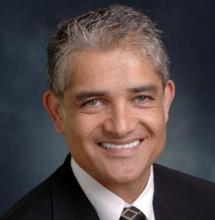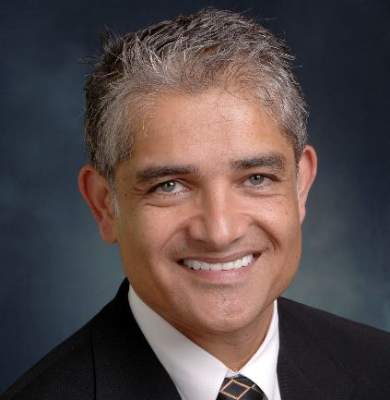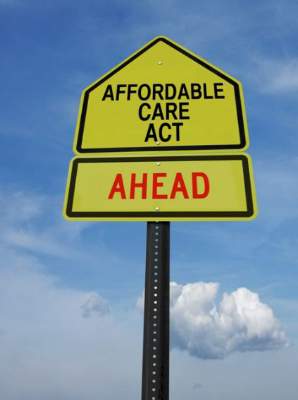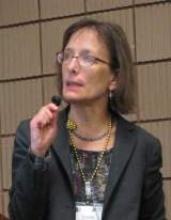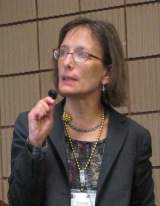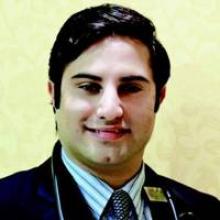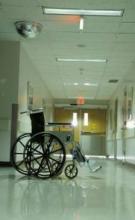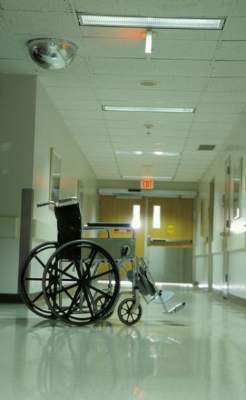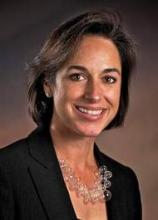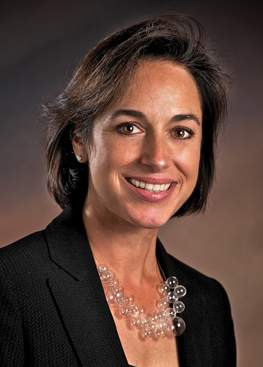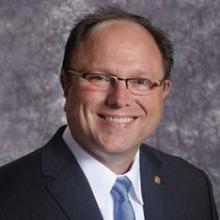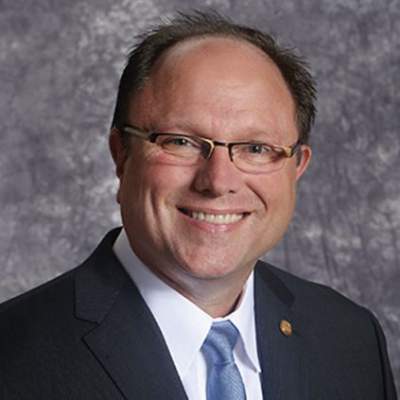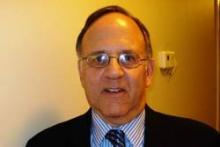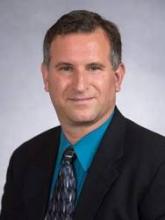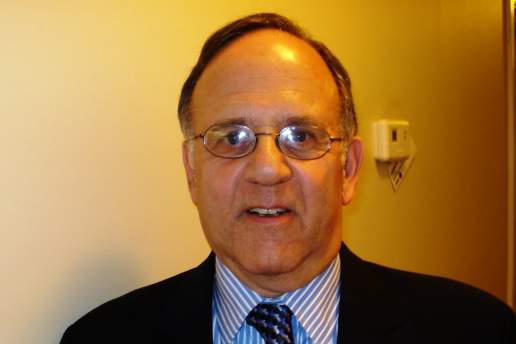User login
RISE registry aims to aid research, quality reporting
The American College of Rheumatology has launched a new clinical registry that allows rheumatologists to more seamlessly report on quality, while also collecting real-world data that could help researchers fill in the gaps on rare diseases, such as lupus.
“By everyone participating in a process by which they get information, a rising tide will lift all boats. Everybody will get better care,” said Dr. Salahuddin Kazi, a rheumatologist at the University of Texas Southwestern Medical Center in Dallas and chair of the ACR’s Registries and Health Information Technology Committee. “We will have a treasure trove of information that will be hypothesis generating.”
The Rheumatology Informatics System for Effectiveness (RISE) Registry is currently available for free to all members of the ACR. The organization has partnered with the health information technology vendor FigMD to build a system that when paired with a practice’s electronic health record (EHR), collects quality data on all patients and sends the de-identified data to the RISE Registry.
The RISE Registry could be a big help to rheumatologists facing multiple reporting requirements from the government and certifying bodies, Dr. Kazi said. The registry has already been recognized by the Centers for Medicare & Medicaid Services as a Qualified Clinical Data Registry. That means physicians can satisfy their reporting requirements to the Physician Quality Reporting System program by contributing data to the RISE Registry. The new ACR registry also meets meaningful use requirements for the Medicare and Medicaid EHR Incentive Programs.
RISE doesn’t just collect data from practices; it also feeds the data back to a dashboard on the practice’s EHR. Rheumatologists can use that dashboard to generate reports that compare their practice’s performance on quality measures to that of their peers. Or it can aid in chronic disease management. For example, physicians can generate a report on how many 65-year-old women in their practice were not screened for osteoporosis.
The RISE reports can also help rheumatologists complete the practice improvement modules required for Maintenance of Certification, Dr. Kazi said.
“The whole principle is enter data once and use it many times,” he said.
This isn’t the ACR’s first foray into clinical registries. In 2009, the ACR launched the Rheumatology Clinical Registry or RCR, allowing physicians to report on quality measures to Medicare. But the system required physicians to manually enter their data, and the data collected were limited to a small number of quality measures.
“We really felt that to truly measure quality and to truly create a learning health care system where you are able to reflect on the care you are providing, that you need a sample size of 100%,” Dr. Kazi said.
The RISE Registry looks to achieve that goal without requiring physicians to manually enter their data. The RCR will remain available, Dr. Kazi said, but for practices with an EHR, the RISE Registry offers more benefits, without the data entry.
The RISE Registry is live now in a “beta testing” phase, Dr. Kazi said. About 50 practices are participating, but so far only a few have gone through the full process. While there’s no data entry involved, practices do need to perform some up-front work to get started, including training from the ACR on how to use the system and signing user agreements that ensure compliance with HIPAA. The vendor also needs to install software that allows the registry to access the practice’s data.
As more rheumatologists add their data to the RISE Registry, ACR officials are hopeful that it can be used for more than quality reporting and improvement. They also see it as a research tool that could provide information that is hard to glean from small, tightly controlled clinical trials.
“We will start to see signals at a low level that are missed in small, 300- or 500-patient studies even if you followed them for 10 years,” Dr. Kazi said. “When we get to that 500,000-patient mark, we will start to find information, and I think this will be very good for research.”
mschneider@frontlinemedcom.com
On Twitter @maryellenny
The American College of Rheumatology has launched a new clinical registry that allows rheumatologists to more seamlessly report on quality, while also collecting real-world data that could help researchers fill in the gaps on rare diseases, such as lupus.
“By everyone participating in a process by which they get information, a rising tide will lift all boats. Everybody will get better care,” said Dr. Salahuddin Kazi, a rheumatologist at the University of Texas Southwestern Medical Center in Dallas and chair of the ACR’s Registries and Health Information Technology Committee. “We will have a treasure trove of information that will be hypothesis generating.”
The Rheumatology Informatics System for Effectiveness (RISE) Registry is currently available for free to all members of the ACR. The organization has partnered with the health information technology vendor FigMD to build a system that when paired with a practice’s electronic health record (EHR), collects quality data on all patients and sends the de-identified data to the RISE Registry.
The RISE Registry could be a big help to rheumatologists facing multiple reporting requirements from the government and certifying bodies, Dr. Kazi said. The registry has already been recognized by the Centers for Medicare & Medicaid Services as a Qualified Clinical Data Registry. That means physicians can satisfy their reporting requirements to the Physician Quality Reporting System program by contributing data to the RISE Registry. The new ACR registry also meets meaningful use requirements for the Medicare and Medicaid EHR Incentive Programs.
RISE doesn’t just collect data from practices; it also feeds the data back to a dashboard on the practice’s EHR. Rheumatologists can use that dashboard to generate reports that compare their practice’s performance on quality measures to that of their peers. Or it can aid in chronic disease management. For example, physicians can generate a report on how many 65-year-old women in their practice were not screened for osteoporosis.
The RISE reports can also help rheumatologists complete the practice improvement modules required for Maintenance of Certification, Dr. Kazi said.
“The whole principle is enter data once and use it many times,” he said.
This isn’t the ACR’s first foray into clinical registries. In 2009, the ACR launched the Rheumatology Clinical Registry or RCR, allowing physicians to report on quality measures to Medicare. But the system required physicians to manually enter their data, and the data collected were limited to a small number of quality measures.
“We really felt that to truly measure quality and to truly create a learning health care system where you are able to reflect on the care you are providing, that you need a sample size of 100%,” Dr. Kazi said.
The RISE Registry looks to achieve that goal without requiring physicians to manually enter their data. The RCR will remain available, Dr. Kazi said, but for practices with an EHR, the RISE Registry offers more benefits, without the data entry.
The RISE Registry is live now in a “beta testing” phase, Dr. Kazi said. About 50 practices are participating, but so far only a few have gone through the full process. While there’s no data entry involved, practices do need to perform some up-front work to get started, including training from the ACR on how to use the system and signing user agreements that ensure compliance with HIPAA. The vendor also needs to install software that allows the registry to access the practice’s data.
As more rheumatologists add their data to the RISE Registry, ACR officials are hopeful that it can be used for more than quality reporting and improvement. They also see it as a research tool that could provide information that is hard to glean from small, tightly controlled clinical trials.
“We will start to see signals at a low level that are missed in small, 300- or 500-patient studies even if you followed them for 10 years,” Dr. Kazi said. “When we get to that 500,000-patient mark, we will start to find information, and I think this will be very good for research.”
mschneider@frontlinemedcom.com
On Twitter @maryellenny
The American College of Rheumatology has launched a new clinical registry that allows rheumatologists to more seamlessly report on quality, while also collecting real-world data that could help researchers fill in the gaps on rare diseases, such as lupus.
“By everyone participating in a process by which they get information, a rising tide will lift all boats. Everybody will get better care,” said Dr. Salahuddin Kazi, a rheumatologist at the University of Texas Southwestern Medical Center in Dallas and chair of the ACR’s Registries and Health Information Technology Committee. “We will have a treasure trove of information that will be hypothesis generating.”
The Rheumatology Informatics System for Effectiveness (RISE) Registry is currently available for free to all members of the ACR. The organization has partnered with the health information technology vendor FigMD to build a system that when paired with a practice’s electronic health record (EHR), collects quality data on all patients and sends the de-identified data to the RISE Registry.
The RISE Registry could be a big help to rheumatologists facing multiple reporting requirements from the government and certifying bodies, Dr. Kazi said. The registry has already been recognized by the Centers for Medicare & Medicaid Services as a Qualified Clinical Data Registry. That means physicians can satisfy their reporting requirements to the Physician Quality Reporting System program by contributing data to the RISE Registry. The new ACR registry also meets meaningful use requirements for the Medicare and Medicaid EHR Incentive Programs.
RISE doesn’t just collect data from practices; it also feeds the data back to a dashboard on the practice’s EHR. Rheumatologists can use that dashboard to generate reports that compare their practice’s performance on quality measures to that of their peers. Or it can aid in chronic disease management. For example, physicians can generate a report on how many 65-year-old women in their practice were not screened for osteoporosis.
The RISE reports can also help rheumatologists complete the practice improvement modules required for Maintenance of Certification, Dr. Kazi said.
“The whole principle is enter data once and use it many times,” he said.
This isn’t the ACR’s first foray into clinical registries. In 2009, the ACR launched the Rheumatology Clinical Registry or RCR, allowing physicians to report on quality measures to Medicare. But the system required physicians to manually enter their data, and the data collected were limited to a small number of quality measures.
“We really felt that to truly measure quality and to truly create a learning health care system where you are able to reflect on the care you are providing, that you need a sample size of 100%,” Dr. Kazi said.
The RISE Registry looks to achieve that goal without requiring physicians to manually enter their data. The RCR will remain available, Dr. Kazi said, but for practices with an EHR, the RISE Registry offers more benefits, without the data entry.
The RISE Registry is live now in a “beta testing” phase, Dr. Kazi said. About 50 practices are participating, but so far only a few have gone through the full process. While there’s no data entry involved, practices do need to perform some up-front work to get started, including training from the ACR on how to use the system and signing user agreements that ensure compliance with HIPAA. The vendor also needs to install software that allows the registry to access the practice’s data.
As more rheumatologists add their data to the RISE Registry, ACR officials are hopeful that it can be used for more than quality reporting and improvement. They also see it as a research tool that could provide information that is hard to glean from small, tightly controlled clinical trials.
“We will start to see signals at a low level that are missed in small, 300- or 500-patient studies even if you followed them for 10 years,” Dr. Kazi said. “When we get to that 500,000-patient mark, we will start to find information, and I think this will be very good for research.”
mschneider@frontlinemedcom.com
On Twitter @maryellenny
HHS cuts 2015 ACA enrollment estimates by a quarter
Federal health officials expect that somewhere between 9 million and 9.9 million individuals will have obtained health insurance through the Affordable Care Act marketplaces by the end of the 2015 open enrollment period, down from a previous government estimate of 13 million.
The 9 million to 9.9 million estimate from the Health and Human Services department assumes that about 83% of individuals who purchased insurance through the marketplaces during 2014 will renew their coverage, with most of the new enrollment coming from previously uninsured individuals.
HHS released the figures just days ahead of the start of the Affordable Care Act’s (ACA’s) second open enrollment period, which runs from Nov. 15 through Feb. 15, 2015.
The Congressional Budget Office, which provides nonpartisan budget analysis for Congress, had projected in April 2014 that 13 million Americans would be insured through the ACA marketplaces by the end of the second enrollment period in February 2015.
The HHS projection is lower, according to the agency, because it assumes that fewer people who have employer-sponsored insurance will jump to the ACA marketplaces in 2015. Fewer individuals who purchased individual market insurance on their own are expected to shop on the ACA marketplaces right away, according to HHS.
Another factor is that the Congressional Budget Office made its projections in April, before the final 2014 enrollment figures were available. In the spring, HHS had said that more than 8 million people had selected plans through the ACA marketplaces, but as of October 2014, 7.1 million individuals had enrolled and were paying for coverage.
The new enrollment estimates were criticized by Republicans on Capitol Hill.
“The administration is again trying to rewrite its definition of success for the president’s signature law on the eve of Saturday’s second enrollment,” Rep. Marsha Blackburn (R-Tenn.), House Energy and Commerce Committee Vice Chairman, said in a statement. “There are still a number of important, unanswered questions, including whether or not the back end is built and if the millions of inconsistencies have been resolved.”
mschneider@frontlinemedcom.com
On Twitter @maryellenny
Federal health officials expect that somewhere between 9 million and 9.9 million individuals will have obtained health insurance through the Affordable Care Act marketplaces by the end of the 2015 open enrollment period, down from a previous government estimate of 13 million.
The 9 million to 9.9 million estimate from the Health and Human Services department assumes that about 83% of individuals who purchased insurance through the marketplaces during 2014 will renew their coverage, with most of the new enrollment coming from previously uninsured individuals.
HHS released the figures just days ahead of the start of the Affordable Care Act’s (ACA’s) second open enrollment period, which runs from Nov. 15 through Feb. 15, 2015.
The Congressional Budget Office, which provides nonpartisan budget analysis for Congress, had projected in April 2014 that 13 million Americans would be insured through the ACA marketplaces by the end of the second enrollment period in February 2015.
The HHS projection is lower, according to the agency, because it assumes that fewer people who have employer-sponsored insurance will jump to the ACA marketplaces in 2015. Fewer individuals who purchased individual market insurance on their own are expected to shop on the ACA marketplaces right away, according to HHS.
Another factor is that the Congressional Budget Office made its projections in April, before the final 2014 enrollment figures were available. In the spring, HHS had said that more than 8 million people had selected plans through the ACA marketplaces, but as of October 2014, 7.1 million individuals had enrolled and were paying for coverage.
The new enrollment estimates were criticized by Republicans on Capitol Hill.
“The administration is again trying to rewrite its definition of success for the president’s signature law on the eve of Saturday’s second enrollment,” Rep. Marsha Blackburn (R-Tenn.), House Energy and Commerce Committee Vice Chairman, said in a statement. “There are still a number of important, unanswered questions, including whether or not the back end is built and if the millions of inconsistencies have been resolved.”
mschneider@frontlinemedcom.com
On Twitter @maryellenny
Federal health officials expect that somewhere between 9 million and 9.9 million individuals will have obtained health insurance through the Affordable Care Act marketplaces by the end of the 2015 open enrollment period, down from a previous government estimate of 13 million.
The 9 million to 9.9 million estimate from the Health and Human Services department assumes that about 83% of individuals who purchased insurance through the marketplaces during 2014 will renew their coverage, with most of the new enrollment coming from previously uninsured individuals.
HHS released the figures just days ahead of the start of the Affordable Care Act’s (ACA’s) second open enrollment period, which runs from Nov. 15 through Feb. 15, 2015.
The Congressional Budget Office, which provides nonpartisan budget analysis for Congress, had projected in April 2014 that 13 million Americans would be insured through the ACA marketplaces by the end of the second enrollment period in February 2015.
The HHS projection is lower, according to the agency, because it assumes that fewer people who have employer-sponsored insurance will jump to the ACA marketplaces in 2015. Fewer individuals who purchased individual market insurance on their own are expected to shop on the ACA marketplaces right away, according to HHS.
Another factor is that the Congressional Budget Office made its projections in April, before the final 2014 enrollment figures were available. In the spring, HHS had said that more than 8 million people had selected plans through the ACA marketplaces, but as of October 2014, 7.1 million individuals had enrolled and were paying for coverage.
The new enrollment estimates were criticized by Republicans on Capitol Hill.
“The administration is again trying to rewrite its definition of success for the president’s signature law on the eve of Saturday’s second enrollment,” Rep. Marsha Blackburn (R-Tenn.), House Energy and Commerce Committee Vice Chairman, said in a statement. “There are still a number of important, unanswered questions, including whether or not the back end is built and if the millions of inconsistencies have been resolved.”
mschneider@frontlinemedcom.com
On Twitter @maryellenny
Medicare inches closer to advance care planning payment
Medicare won’t pay physicians for counseling their patients on advance care directives in 2015, but they are open to doing it sometime in the future.
In the 2015 Medicare Physician Fee Schedule, federal officials said they “will consider” whether to pay for codes related to advance care planning services after they have had the opportunity to go through notice and comment rulemaking.
The final physician payment rule, which was released on Oct. 31, highlights two codes recently created by the American Medical Association’s Relative Value Update Committee. The CPT code 99497 covers the first 30 minutes of a face-to-face discussion with the patient, family member, or surrogate about advance directives, as well as the completion of forms. The add-on CPT code 99498 covers each additional 30 minutes.
Physicians can use the new codes, but Medicare will not pay for them in 2015, according to the rule.
Dr. Diane E. Meier, director of the Center to Advance Palliative Care, said the agency’s decision not to move forward immediately with payment is not a surprise. “I think it’s promising,” she said. “I think it’s not surprising that they are being extremely cautious and hesitant given the political firestorm that an effort to do this created in 2009.”
Public opinion on end-of-life care is beginning to shift, Dr. Meier said, which could bode well for future Medicare payment. But payment is only one barrier to making counseling available to all patients. Training physicians and other health care providers in how to have conversations about the end of life is a far bigger hurdle, she said.
“If the clinician is afraid, uncomfortable, doesn’t even know how to begin, it doesn’t matter if there’s a payment,” she said. “They’re not going to do it.”
There has been some momentum building for Medicare payment for end-of-life counseling, including pressure from Congress. In September, 34 members of the U.S. House of Representatives wrote to CMS urging them to begin paying for the newly created codes 99497 and 99498.
The Institute of Medicine in its September report, Dying in America, also recommended that physicians be compensated for counseling patients on end-of-life planning.
mschneider@frontlinemedcom.com
On Twitter @maryellenny
Dr. Michael Nelson, FCCP, comments: Pulmonary and critical care physicians counsel patients and offer advance directives as part of routine care, as do many other physicians. It is appropriate to expect reimbursement for providing this often time-consuming process. However, CMS occasionally chooses not to reimburse for CPT codes until it has an opportunity to study the financial implications of this decision. While CMS cannot be compelled to decide in favor of physicians, contacting your senators and representatives at the federal level and requesting their support for payment is a good way to help CMS decide to "do the right thing."
Dr. Nelson is a physician with Shawnee Mission Pulmonary Consultants in Shawnee Mission, Kansas.
Dr. Michael Nelson, FCCP, comments: Pulmonary and critical care physicians counsel patients and offer advance directives as part of routine care, as do many other physicians. It is appropriate to expect reimbursement for providing this often time-consuming process. However, CMS occasionally chooses not to reimburse for CPT codes until it has an opportunity to study the financial implications of this decision. While CMS cannot be compelled to decide in favor of physicians, contacting your senators and representatives at the federal level and requesting their support for payment is a good way to help CMS decide to "do the right thing."
Dr. Nelson is a physician with Shawnee Mission Pulmonary Consultants in Shawnee Mission, Kansas.
Dr. Michael Nelson, FCCP, comments: Pulmonary and critical care physicians counsel patients and offer advance directives as part of routine care, as do many other physicians. It is appropriate to expect reimbursement for providing this often time-consuming process. However, CMS occasionally chooses not to reimburse for CPT codes until it has an opportunity to study the financial implications of this decision. While CMS cannot be compelled to decide in favor of physicians, contacting your senators and representatives at the federal level and requesting their support for payment is a good way to help CMS decide to "do the right thing."
Dr. Nelson is a physician with Shawnee Mission Pulmonary Consultants in Shawnee Mission, Kansas.
Medicare won’t pay physicians for counseling their patients on advance care directives in 2015, but they are open to doing it sometime in the future.
In the 2015 Medicare Physician Fee Schedule, federal officials said they “will consider” whether to pay for codes related to advance care planning services after they have had the opportunity to go through notice and comment rulemaking.
The final physician payment rule, which was released on Oct. 31, highlights two codes recently created by the American Medical Association’s Relative Value Update Committee. The CPT code 99497 covers the first 30 minutes of a face-to-face discussion with the patient, family member, or surrogate about advance directives, as well as the completion of forms. The add-on CPT code 99498 covers each additional 30 minutes.
Physicians can use the new codes, but Medicare will not pay for them in 2015, according to the rule.
Dr. Diane E. Meier, director of the Center to Advance Palliative Care, said the agency’s decision not to move forward immediately with payment is not a surprise. “I think it’s promising,” she said. “I think it’s not surprising that they are being extremely cautious and hesitant given the political firestorm that an effort to do this created in 2009.”
Public opinion on end-of-life care is beginning to shift, Dr. Meier said, which could bode well for future Medicare payment. But payment is only one barrier to making counseling available to all patients. Training physicians and other health care providers in how to have conversations about the end of life is a far bigger hurdle, she said.
“If the clinician is afraid, uncomfortable, doesn’t even know how to begin, it doesn’t matter if there’s a payment,” she said. “They’re not going to do it.”
There has been some momentum building for Medicare payment for end-of-life counseling, including pressure from Congress. In September, 34 members of the U.S. House of Representatives wrote to CMS urging them to begin paying for the newly created codes 99497 and 99498.
The Institute of Medicine in its September report, Dying in America, also recommended that physicians be compensated for counseling patients on end-of-life planning.
mschneider@frontlinemedcom.com
On Twitter @maryellenny
Medicare won’t pay physicians for counseling their patients on advance care directives in 2015, but they are open to doing it sometime in the future.
In the 2015 Medicare Physician Fee Schedule, federal officials said they “will consider” whether to pay for codes related to advance care planning services after they have had the opportunity to go through notice and comment rulemaking.
The final physician payment rule, which was released on Oct. 31, highlights two codes recently created by the American Medical Association’s Relative Value Update Committee. The CPT code 99497 covers the first 30 minutes of a face-to-face discussion with the patient, family member, or surrogate about advance directives, as well as the completion of forms. The add-on CPT code 99498 covers each additional 30 minutes.
Physicians can use the new codes, but Medicare will not pay for them in 2015, according to the rule.
Dr. Diane E. Meier, director of the Center to Advance Palliative Care, said the agency’s decision not to move forward immediately with payment is not a surprise. “I think it’s promising,” she said. “I think it’s not surprising that they are being extremely cautious and hesitant given the political firestorm that an effort to do this created in 2009.”
Public opinion on end-of-life care is beginning to shift, Dr. Meier said, which could bode well for future Medicare payment. But payment is only one barrier to making counseling available to all patients. Training physicians and other health care providers in how to have conversations about the end of life is a far bigger hurdle, she said.
“If the clinician is afraid, uncomfortable, doesn’t even know how to begin, it doesn’t matter if there’s a payment,” she said. “They’re not going to do it.”
There has been some momentum building for Medicare payment for end-of-life counseling, including pressure from Congress. In September, 34 members of the U.S. House of Representatives wrote to CMS urging them to begin paying for the newly created codes 99497 and 99498.
The Institute of Medicine in its September report, Dying in America, also recommended that physicians be compensated for counseling patients on end-of-life planning.
mschneider@frontlinemedcom.com
On Twitter @maryellenny
Physicians call $40 care coordination payment a good start
Medicare is offering physicians who coordinate care for patients with multiple chronic illnesses $40 per patient per month for their non–face-to-face work. But is it enough?
Physicians are calling the new chronic care management codes a good start, but not enough to cause them to make significant investments in their practices. And they have concerns about the numerous requirements for billing with the codes.
“While [the American College of Physicians] would have preferred to see the payment amount for the Chronic Care Management code be increased given the level of work involved in implementing this code, the College appreciates that [the Centers for Medicare & Medicaid Services] has now finalized its plan to provide payment to clinicians for the critically important non–face-to-face work involved in helping patients manage multiple chronic conditions,” said Shari Erickson, vice president for government affairs and medical practice at the American College of Physicians.
Dr. Robert L. Wergin, the president of the American Academy of Family Physicians, echoed that statement.
“We’re very positive that this is a step in the right direction of value-based payments that recognizes the value of coordinating a person’s care, particularly if they’re elderly or disabled,” Dr. Wergin said. “We feel it might even improve our ability to care for patients.”
It may, however, take more than $40 to set up the appropriate office infrastructure to support the required services. “As patients become more complex,” the fee probably should be increased, he said.
Dr. Kim K. Yu, a family physician in Frankenmuth, Mich. and president-elect of the Michigan Academy of Family Physicians, said the care coordination payment is “better than nothing” and a good recognition on the part of the Centers for Medicare & Medicaid Services (CMS) of the complex care that family physicians provide. But she worries about the lengthy list of requirements that physicians must meet in order to bill Medicare for the codes.
“My concern is the amount of paperwork and documentation required to be able to code for [this],” Dr. Yu said. “Simplifying processes but still delivering better health, better care, at lower cost should be a priority.”
As part of the 2015 Medicare Physician Fee Schedule released Oct. 31, the CMS officials finalized plans to begin paying physicians about $40 per patient per month for non–face-to-face chronic care management services, such as developing and revising the care plan, communicating with other providers, and managing medications.
Physicians can bill for the services using the CPT codes 99490, 99487, and 99489. The CMS plans to make a bundled payment for 99487 and 99489, according to the rule. The codes apply only to Medicare patients with two or more significant, chronic conditions.
Practices also must provide patients with a way to reach providers 24/7. There must be continuity of care that allows patients to see a designated member of the care team on a consistent basis. And practices must perform systematic assessments of the patient’s medical, functional, and psychosocial needs; and use systems-based approaches to ensure timely receipt of preventive care, medication reconciliation with review of adherence, and oversight of the patient’s self-management of their medications.
The fee schedule also specifies that practices must have certified electronic health records that they use for maintaining problem and medication lists, communicating with home and community-based providers, informing patients of the availability of chronic care management services, and obtaining patients’ written consent. In 2015, the CMS will allow practices to use EHRs certified in either 2011 or 2014.
mschneider@frontlinemedcom.com
On Twitter @maryellenny
Medicare is offering physicians who coordinate care for patients with multiple chronic illnesses $40 per patient per month for their non–face-to-face work. But is it enough?
Physicians are calling the new chronic care management codes a good start, but not enough to cause them to make significant investments in their practices. And they have concerns about the numerous requirements for billing with the codes.
“While [the American College of Physicians] would have preferred to see the payment amount for the Chronic Care Management code be increased given the level of work involved in implementing this code, the College appreciates that [the Centers for Medicare & Medicaid Services] has now finalized its plan to provide payment to clinicians for the critically important non–face-to-face work involved in helping patients manage multiple chronic conditions,” said Shari Erickson, vice president for government affairs and medical practice at the American College of Physicians.
Dr. Robert L. Wergin, the president of the American Academy of Family Physicians, echoed that statement.
“We’re very positive that this is a step in the right direction of value-based payments that recognizes the value of coordinating a person’s care, particularly if they’re elderly or disabled,” Dr. Wergin said. “We feel it might even improve our ability to care for patients.”
It may, however, take more than $40 to set up the appropriate office infrastructure to support the required services. “As patients become more complex,” the fee probably should be increased, he said.
Dr. Kim K. Yu, a family physician in Frankenmuth, Mich. and president-elect of the Michigan Academy of Family Physicians, said the care coordination payment is “better than nothing” and a good recognition on the part of the Centers for Medicare & Medicaid Services (CMS) of the complex care that family physicians provide. But she worries about the lengthy list of requirements that physicians must meet in order to bill Medicare for the codes.
“My concern is the amount of paperwork and documentation required to be able to code for [this],” Dr. Yu said. “Simplifying processes but still delivering better health, better care, at lower cost should be a priority.”
As part of the 2015 Medicare Physician Fee Schedule released Oct. 31, the CMS officials finalized plans to begin paying physicians about $40 per patient per month for non–face-to-face chronic care management services, such as developing and revising the care plan, communicating with other providers, and managing medications.
Physicians can bill for the services using the CPT codes 99490, 99487, and 99489. The CMS plans to make a bundled payment for 99487 and 99489, according to the rule. The codes apply only to Medicare patients with two or more significant, chronic conditions.
Practices also must provide patients with a way to reach providers 24/7. There must be continuity of care that allows patients to see a designated member of the care team on a consistent basis. And practices must perform systematic assessments of the patient’s medical, functional, and psychosocial needs; and use systems-based approaches to ensure timely receipt of preventive care, medication reconciliation with review of adherence, and oversight of the patient’s self-management of their medications.
The fee schedule also specifies that practices must have certified electronic health records that they use for maintaining problem and medication lists, communicating with home and community-based providers, informing patients of the availability of chronic care management services, and obtaining patients’ written consent. In 2015, the CMS will allow practices to use EHRs certified in either 2011 or 2014.
mschneider@frontlinemedcom.com
On Twitter @maryellenny
Medicare is offering physicians who coordinate care for patients with multiple chronic illnesses $40 per patient per month for their non–face-to-face work. But is it enough?
Physicians are calling the new chronic care management codes a good start, but not enough to cause them to make significant investments in their practices. And they have concerns about the numerous requirements for billing with the codes.
“While [the American College of Physicians] would have preferred to see the payment amount for the Chronic Care Management code be increased given the level of work involved in implementing this code, the College appreciates that [the Centers for Medicare & Medicaid Services] has now finalized its plan to provide payment to clinicians for the critically important non–face-to-face work involved in helping patients manage multiple chronic conditions,” said Shari Erickson, vice president for government affairs and medical practice at the American College of Physicians.
Dr. Robert L. Wergin, the president of the American Academy of Family Physicians, echoed that statement.
“We’re very positive that this is a step in the right direction of value-based payments that recognizes the value of coordinating a person’s care, particularly if they’re elderly or disabled,” Dr. Wergin said. “We feel it might even improve our ability to care for patients.”
It may, however, take more than $40 to set up the appropriate office infrastructure to support the required services. “As patients become more complex,” the fee probably should be increased, he said.
Dr. Kim K. Yu, a family physician in Frankenmuth, Mich. and president-elect of the Michigan Academy of Family Physicians, said the care coordination payment is “better than nothing” and a good recognition on the part of the Centers for Medicare & Medicaid Services (CMS) of the complex care that family physicians provide. But she worries about the lengthy list of requirements that physicians must meet in order to bill Medicare for the codes.
“My concern is the amount of paperwork and documentation required to be able to code for [this],” Dr. Yu said. “Simplifying processes but still delivering better health, better care, at lower cost should be a priority.”
As part of the 2015 Medicare Physician Fee Schedule released Oct. 31, the CMS officials finalized plans to begin paying physicians about $40 per patient per month for non–face-to-face chronic care management services, such as developing and revising the care plan, communicating with other providers, and managing medications.
Physicians can bill for the services using the CPT codes 99490, 99487, and 99489. The CMS plans to make a bundled payment for 99487 and 99489, according to the rule. The codes apply only to Medicare patients with two or more significant, chronic conditions.
Practices also must provide patients with a way to reach providers 24/7. There must be continuity of care that allows patients to see a designated member of the care team on a consistent basis. And practices must perform systematic assessments of the patient’s medical, functional, and psychosocial needs; and use systems-based approaches to ensure timely receipt of preventive care, medication reconciliation with review of adherence, and oversight of the patient’s self-management of their medications.
The fee schedule also specifies that practices must have certified electronic health records that they use for maintaining problem and medication lists, communicating with home and community-based providers, informing patients of the availability of chronic care management services, and obtaining patients’ written consent. In 2015, the CMS will allow practices to use EHRs certified in either 2011 or 2014.
mschneider@frontlinemedcom.com
On Twitter @maryellenny
New apps let patients order house calls
The house call is back, but with a high-tech twist.
In pockets around the country, patients can use mobile applications to order up house calls in a matter of hours. Companies like Pager, which launched in New York, and Medicast, which is available on the West Coast and in South Florida, allow patients to input some personal health information and a credit card number, and have a physician visit them in their home, usually within 2 hours.
The apps have slightly different pricing models and scope of services. But a typical house call ranges from $199 to $299 and the physicians – board certified in various specialties – treat everything from bronchitis to allergies to minor injuries. Patients can even order a flu shot.
Patients can submit the receipts to their insurance company, but the services are direct pay, at least for now.
The convenience of the apps is undeniable, but what about the quality of care?
Dr. Sahba Ferdowsi, cofounder and chief medical officer at Medicast, said their model, which avoids the rushed office visit, lends itself to a thoughtful, patient-centered experience.
“It’s a world of difference,” Dr. Ferdowsi said. In a clinic setting, patients tend to be nervous. But when someone invites a physician into his or her home, there’s a certain level of “hospitality” involved that puts the patient at ease, he said.
“It allows the patient to really have their guard down,” he added.
Physicians can learn more about their patients by seeing them in their homes, Dr. Ferdowsi said. They can also spend more time with them, with visits often running 30-35 minutes, he said.
Since the house call physicians don’t have an established relationship with the patient, they make up for it by focusing on history taking and performing a full physical exam. The Medicast app also collects some personal health information that the physicians can review before the visit.
After the visit, the physician fills out the note, which can be e-mailed to the patient’s primary care physician or sent directly to the patient.
Dr. Jasper Schmidt, a Pager physician who works in Manhattan and Brooklyn, said their system works in a similar way, allowing them to automatically fax records back to the patient’s regular doctor. Going forward, Pager is looking to form partnerships with health systems that would allow them greater access to patients’ past medical histories before a visit.
The apps are getting mixed reviews from health care providers.
Dr. Neil Skolnik, associate director of the family medicine residency program at Abington (Pa.) Memorial Hospital, said that while the best care is from a physician who has a relationship with the patient and access to the complete medical history, there is value in other models of delivery.
“We are seeing an increase in urgent care utilization, meeting people’s needs for medical care where and when it is convenient for them, and it seems to me that physician house calls is an extension of this process,” Dr. Skolnik said. “While this is expensive for an office visit, and in that way is like a concierge practice, as long as the quality of care is good and the doctors are skilled and compassionate, there is no reason that this should not be an excellent option for some people for whom the convenience outweighs the cost.”
Dr. Jeffery Katz, who provides house calls to homebound Medicaid managed care patients in central Maryland, praised the house call apps, saying they have the potential to bring down costs for the health care system and free physicians from the hassles of dealing with insurance companies.
“Keeping patients away from the ER and treating them at home makes sense for a lot of reasons,” he said. “I think it’s going to be a big trend, especially as time goes on and the insurance industry tries to push the envelope on high deductibles.”
Dr. Farzanna S. Haffizulla, an internist with a direct-pay practice in Davie, Fla., said the house call app model lacks continuity of care, but works as long as the companies stick to seeing patients with uncomplicated illnesses in need of episodic care.
Ideally, she’d like to see more primary care physicians move toward incorporating house calls into their practices, as she has done, to provide both convenience and comprehensive care. In her South Florida practice, Dr. Haffizulla offers patients the option of seeing her at their home or in her office. But she acknowledges that she’s only able to do it because she doesn’t accept insurance in her practice.
Dr. Robert Wergin, president of the American Academy of Family Physicians, said the apps have a niche role in offering convenient access to primary care. But as with urgent care centers and retail health clinics, Dr. Wergin said the downside is the lack of relationships and the disjointed care.
The high cost to patients is also a negative, he said.
“I think as a business model for episodic care, there might be a limited role for it,” Dr. Wergin said.
The emergence of convenience apps like these highlight the need for primary care physicians to not only create greater access to their practices, but to let patients know about it, Dr. Wergin said.
Many patients who go to retail clinics don’t realize that most family physicians have same-day appointments, he said. A 2013 AAFP survey found that 80% of their members offered same-day appointments, 51% provided extended office hours, and 34% had weekend appointments.
And physician practices may be able to mimic the convenience of using an app soon, Dr. Wergin said, as patient portals become more advanced and more commonly used.
Constance F. Row, executive director of the American Academy of Home Care Medicine, predicted that the house call apps, like urgent care centers, will need to gradually link to health systems, building systems for referrals, labs, and imaging.
“What we’re seeing is people starting down a path that has been well trod in the fixed-site urgent care center model,” Ms. Row said. “They are taking it on the road. And the question that I have is really are they going to evolve in the same way that the urgent care center movement has?”
Unless the apps stick solely to a population of young, healthy patients with only episodic care needs, they will need to develop relationships with other providers, she said, or risk losing business.
mschneider@frontlinemedcom.com
On Twitter @maryellenny
The house call is back, but with a high-tech twist.
In pockets around the country, patients can use mobile applications to order up house calls in a matter of hours. Companies like Pager, which launched in New York, and Medicast, which is available on the West Coast and in South Florida, allow patients to input some personal health information and a credit card number, and have a physician visit them in their home, usually within 2 hours.
The apps have slightly different pricing models and scope of services. But a typical house call ranges from $199 to $299 and the physicians – board certified in various specialties – treat everything from bronchitis to allergies to minor injuries. Patients can even order a flu shot.
Patients can submit the receipts to their insurance company, but the services are direct pay, at least for now.
The convenience of the apps is undeniable, but what about the quality of care?
Dr. Sahba Ferdowsi, cofounder and chief medical officer at Medicast, said their model, which avoids the rushed office visit, lends itself to a thoughtful, patient-centered experience.
“It’s a world of difference,” Dr. Ferdowsi said. In a clinic setting, patients tend to be nervous. But when someone invites a physician into his or her home, there’s a certain level of “hospitality” involved that puts the patient at ease, he said.
“It allows the patient to really have their guard down,” he added.
Physicians can learn more about their patients by seeing them in their homes, Dr. Ferdowsi said. They can also spend more time with them, with visits often running 30-35 minutes, he said.
Since the house call physicians don’t have an established relationship with the patient, they make up for it by focusing on history taking and performing a full physical exam. The Medicast app also collects some personal health information that the physicians can review before the visit.
After the visit, the physician fills out the note, which can be e-mailed to the patient’s primary care physician or sent directly to the patient.
Dr. Jasper Schmidt, a Pager physician who works in Manhattan and Brooklyn, said their system works in a similar way, allowing them to automatically fax records back to the patient’s regular doctor. Going forward, Pager is looking to form partnerships with health systems that would allow them greater access to patients’ past medical histories before a visit.
The apps are getting mixed reviews from health care providers.
Dr. Neil Skolnik, associate director of the family medicine residency program at Abington (Pa.) Memorial Hospital, said that while the best care is from a physician who has a relationship with the patient and access to the complete medical history, there is value in other models of delivery.
“We are seeing an increase in urgent care utilization, meeting people’s needs for medical care where and when it is convenient for them, and it seems to me that physician house calls is an extension of this process,” Dr. Skolnik said. “While this is expensive for an office visit, and in that way is like a concierge practice, as long as the quality of care is good and the doctors are skilled and compassionate, there is no reason that this should not be an excellent option for some people for whom the convenience outweighs the cost.”
Dr. Jeffery Katz, who provides house calls to homebound Medicaid managed care patients in central Maryland, praised the house call apps, saying they have the potential to bring down costs for the health care system and free physicians from the hassles of dealing with insurance companies.
“Keeping patients away from the ER and treating them at home makes sense for a lot of reasons,” he said. “I think it’s going to be a big trend, especially as time goes on and the insurance industry tries to push the envelope on high deductibles.”
Dr. Farzanna S. Haffizulla, an internist with a direct-pay practice in Davie, Fla., said the house call app model lacks continuity of care, but works as long as the companies stick to seeing patients with uncomplicated illnesses in need of episodic care.
Ideally, she’d like to see more primary care physicians move toward incorporating house calls into their practices, as she has done, to provide both convenience and comprehensive care. In her South Florida practice, Dr. Haffizulla offers patients the option of seeing her at their home or in her office. But she acknowledges that she’s only able to do it because she doesn’t accept insurance in her practice.
Dr. Robert Wergin, president of the American Academy of Family Physicians, said the apps have a niche role in offering convenient access to primary care. But as with urgent care centers and retail health clinics, Dr. Wergin said the downside is the lack of relationships and the disjointed care.
The high cost to patients is also a negative, he said.
“I think as a business model for episodic care, there might be a limited role for it,” Dr. Wergin said.
The emergence of convenience apps like these highlight the need for primary care physicians to not only create greater access to their practices, but to let patients know about it, Dr. Wergin said.
Many patients who go to retail clinics don’t realize that most family physicians have same-day appointments, he said. A 2013 AAFP survey found that 80% of their members offered same-day appointments, 51% provided extended office hours, and 34% had weekend appointments.
And physician practices may be able to mimic the convenience of using an app soon, Dr. Wergin said, as patient portals become more advanced and more commonly used.
Constance F. Row, executive director of the American Academy of Home Care Medicine, predicted that the house call apps, like urgent care centers, will need to gradually link to health systems, building systems for referrals, labs, and imaging.
“What we’re seeing is people starting down a path that has been well trod in the fixed-site urgent care center model,” Ms. Row said. “They are taking it on the road. And the question that I have is really are they going to evolve in the same way that the urgent care center movement has?”
Unless the apps stick solely to a population of young, healthy patients with only episodic care needs, they will need to develop relationships with other providers, she said, or risk losing business.
mschneider@frontlinemedcom.com
On Twitter @maryellenny
The house call is back, but with a high-tech twist.
In pockets around the country, patients can use mobile applications to order up house calls in a matter of hours. Companies like Pager, which launched in New York, and Medicast, which is available on the West Coast and in South Florida, allow patients to input some personal health information and a credit card number, and have a physician visit them in their home, usually within 2 hours.
The apps have slightly different pricing models and scope of services. But a typical house call ranges from $199 to $299 and the physicians – board certified in various specialties – treat everything from bronchitis to allergies to minor injuries. Patients can even order a flu shot.
Patients can submit the receipts to their insurance company, but the services are direct pay, at least for now.
The convenience of the apps is undeniable, but what about the quality of care?
Dr. Sahba Ferdowsi, cofounder and chief medical officer at Medicast, said their model, which avoids the rushed office visit, lends itself to a thoughtful, patient-centered experience.
“It’s a world of difference,” Dr. Ferdowsi said. In a clinic setting, patients tend to be nervous. But when someone invites a physician into his or her home, there’s a certain level of “hospitality” involved that puts the patient at ease, he said.
“It allows the patient to really have their guard down,” he added.
Physicians can learn more about their patients by seeing them in their homes, Dr. Ferdowsi said. They can also spend more time with them, with visits often running 30-35 minutes, he said.
Since the house call physicians don’t have an established relationship with the patient, they make up for it by focusing on history taking and performing a full physical exam. The Medicast app also collects some personal health information that the physicians can review before the visit.
After the visit, the physician fills out the note, which can be e-mailed to the patient’s primary care physician or sent directly to the patient.
Dr. Jasper Schmidt, a Pager physician who works in Manhattan and Brooklyn, said their system works in a similar way, allowing them to automatically fax records back to the patient’s regular doctor. Going forward, Pager is looking to form partnerships with health systems that would allow them greater access to patients’ past medical histories before a visit.
The apps are getting mixed reviews from health care providers.
Dr. Neil Skolnik, associate director of the family medicine residency program at Abington (Pa.) Memorial Hospital, said that while the best care is from a physician who has a relationship with the patient and access to the complete medical history, there is value in other models of delivery.
“We are seeing an increase in urgent care utilization, meeting people’s needs for medical care where and when it is convenient for them, and it seems to me that physician house calls is an extension of this process,” Dr. Skolnik said. “While this is expensive for an office visit, and in that way is like a concierge practice, as long as the quality of care is good and the doctors are skilled and compassionate, there is no reason that this should not be an excellent option for some people for whom the convenience outweighs the cost.”
Dr. Jeffery Katz, who provides house calls to homebound Medicaid managed care patients in central Maryland, praised the house call apps, saying they have the potential to bring down costs for the health care system and free physicians from the hassles of dealing with insurance companies.
“Keeping patients away from the ER and treating them at home makes sense for a lot of reasons,” he said. “I think it’s going to be a big trend, especially as time goes on and the insurance industry tries to push the envelope on high deductibles.”
Dr. Farzanna S. Haffizulla, an internist with a direct-pay practice in Davie, Fla., said the house call app model lacks continuity of care, but works as long as the companies stick to seeing patients with uncomplicated illnesses in need of episodic care.
Ideally, she’d like to see more primary care physicians move toward incorporating house calls into their practices, as she has done, to provide both convenience and comprehensive care. In her South Florida practice, Dr. Haffizulla offers patients the option of seeing her at their home or in her office. But she acknowledges that she’s only able to do it because she doesn’t accept insurance in her practice.
Dr. Robert Wergin, president of the American Academy of Family Physicians, said the apps have a niche role in offering convenient access to primary care. But as with urgent care centers and retail health clinics, Dr. Wergin said the downside is the lack of relationships and the disjointed care.
The high cost to patients is also a negative, he said.
“I think as a business model for episodic care, there might be a limited role for it,” Dr. Wergin said.
The emergence of convenience apps like these highlight the need for primary care physicians to not only create greater access to their practices, but to let patients know about it, Dr. Wergin said.
Many patients who go to retail clinics don’t realize that most family physicians have same-day appointments, he said. A 2013 AAFP survey found that 80% of their members offered same-day appointments, 51% provided extended office hours, and 34% had weekend appointments.
And physician practices may be able to mimic the convenience of using an app soon, Dr. Wergin said, as patient portals become more advanced and more commonly used.
Constance F. Row, executive director of the American Academy of Home Care Medicine, predicted that the house call apps, like urgent care centers, will need to gradually link to health systems, building systems for referrals, labs, and imaging.
“What we’re seeing is people starting down a path that has been well trod in the fixed-site urgent care center model,” Ms. Row said. “They are taking it on the road. And the question that I have is really are they going to evolve in the same way that the urgent care center movement has?”
Unless the apps stick solely to a population of young, healthy patients with only episodic care needs, they will need to develop relationships with other providers, she said, or risk losing business.
mschneider@frontlinemedcom.com
On Twitter @maryellenny
Medicare begins bundled hospital outpatient payments in 2015
After a year-long delay, Medicare officials are implementing bundled payments for a number of services performed in hospital outpatient departments.
The new payments, which were finalized in the 2015 Medicare Hospital Outpatient Prospective Payment System rule, take effect on Jan. 1, 2015.
The Centers for Medicare & Medicaid Services selected 25 primary services and their adjunctive services and supplies as comprehensive ambulatory payment classifications (C-APCs) and will provide a single payment under Medicare Part B. Medicare beneficiaries will pay a single copayment for the C-APC services.
The 25 C-APCs fall within 12 clinical families:
• automatic implantable cardiac defibrillators, pacemakers, and related devices.
• breast surgery.
• ENT procedures.
• cardiac electrophysiology.
• ophthalmic surgery.
• gastrointestinal procedures.
• neurostimulators.
• orthopedic surgery.
• implantable drug delivery systems.
• radiation oncology.
• urogenital procedures.
• vascular procedures.
For instance, Medicare has designated implantation of a drug infusion device as a C-APC (0227) with a bundled Part B Medicare payment of $15,566.
The final rule, which was released by CMS on Oct. 31, also reversed the CMS policy of requiring physician certification for all Medicare Part A hospital admissions.
Starting Jan. 1, a formal physician certification is required only for long-stay cases of 20 days or more, or in costly outlier cases. For most patients, the admission order, medical record, and progress notes will contain “sufficient information to support the medical necessity of an inpatient admission without a separate requirement of an additional, formal, physician certification,” according to the final rule.
The revision of the physician certification policy does not remove any of the requirements associated with Medicare’s controversial 2-midnight policy, which governs short-stay hospitalizations.
The final rule will be published in the Federal Register on Nov. 10.
mschneider@frontlinemedcom.com
On Twitter @maryellenny
After a year-long delay, Medicare officials are implementing bundled payments for a number of services performed in hospital outpatient departments.
The new payments, which were finalized in the 2015 Medicare Hospital Outpatient Prospective Payment System rule, take effect on Jan. 1, 2015.
The Centers for Medicare & Medicaid Services selected 25 primary services and their adjunctive services and supplies as comprehensive ambulatory payment classifications (C-APCs) and will provide a single payment under Medicare Part B. Medicare beneficiaries will pay a single copayment for the C-APC services.
The 25 C-APCs fall within 12 clinical families:
• automatic implantable cardiac defibrillators, pacemakers, and related devices.
• breast surgery.
• ENT procedures.
• cardiac electrophysiology.
• ophthalmic surgery.
• gastrointestinal procedures.
• neurostimulators.
• orthopedic surgery.
• implantable drug delivery systems.
• radiation oncology.
• urogenital procedures.
• vascular procedures.
For instance, Medicare has designated implantation of a drug infusion device as a C-APC (0227) with a bundled Part B Medicare payment of $15,566.
The final rule, which was released by CMS on Oct. 31, also reversed the CMS policy of requiring physician certification for all Medicare Part A hospital admissions.
Starting Jan. 1, a formal physician certification is required only for long-stay cases of 20 days or more, or in costly outlier cases. For most patients, the admission order, medical record, and progress notes will contain “sufficient information to support the medical necessity of an inpatient admission without a separate requirement of an additional, formal, physician certification,” according to the final rule.
The revision of the physician certification policy does not remove any of the requirements associated with Medicare’s controversial 2-midnight policy, which governs short-stay hospitalizations.
The final rule will be published in the Federal Register on Nov. 10.
mschneider@frontlinemedcom.com
On Twitter @maryellenny
After a year-long delay, Medicare officials are implementing bundled payments for a number of services performed in hospital outpatient departments.
The new payments, which were finalized in the 2015 Medicare Hospital Outpatient Prospective Payment System rule, take effect on Jan. 1, 2015.
The Centers for Medicare & Medicaid Services selected 25 primary services and their adjunctive services and supplies as comprehensive ambulatory payment classifications (C-APCs) and will provide a single payment under Medicare Part B. Medicare beneficiaries will pay a single copayment for the C-APC services.
The 25 C-APCs fall within 12 clinical families:
• automatic implantable cardiac defibrillators, pacemakers, and related devices.
• breast surgery.
• ENT procedures.
• cardiac electrophysiology.
• ophthalmic surgery.
• gastrointestinal procedures.
• neurostimulators.
• orthopedic surgery.
• implantable drug delivery systems.
• radiation oncology.
• urogenital procedures.
• vascular procedures.
For instance, Medicare has designated implantation of a drug infusion device as a C-APC (0227) with a bundled Part B Medicare payment of $15,566.
The final rule, which was released by CMS on Oct. 31, also reversed the CMS policy of requiring physician certification for all Medicare Part A hospital admissions.
Starting Jan. 1, a formal physician certification is required only for long-stay cases of 20 days or more, or in costly outlier cases. For most patients, the admission order, medical record, and progress notes will contain “sufficient information to support the medical necessity of an inpatient admission without a separate requirement of an additional, formal, physician certification,” according to the final rule.
The revision of the physician certification policy does not remove any of the requirements associated with Medicare’s controversial 2-midnight policy, which governs short-stay hospitalizations.
The final rule will be published in the Federal Register on Nov. 10.
mschneider@frontlinemedcom.com
On Twitter @maryellenny
Medicare finalizes $40 per month payments for patient care coordination
Time spent on care coordination outside of the face-to-face visit will receive pay recognition in 2015, as a result of a regulation from the Centers for Medicare & Medicaid Services.
On Oct. 31, CMS officials released the final 2015 Medicare Physician Fee Schedule rule, which lays out how much, and under what conditions, payment will be made for providing care coordination services to Medicare patients with multiple chronic conditions.
Starting Jan. 1, about $40 per patient per month can be earned for non-face-to-face chronic care management services, such as developing and revising the care plan, communicating with other treating providers, and managing medications.
The billing codes – CPT codes 99490 and 99487 and 99489 – apply only to Medicare patients with two or more significant, chronic conditions. CMS plans to make a bundled payment for codes 99487 and 99489, according to the rule.
CMS will also allow more “flexibility” in the supervision of clinical staff who provide care coordination services. Under the rule, physicians can bill “incident to” services provided by clinical staff members, even if they are not direct employees and are under general, but not direct, supervision.
CMS said the rules for “incident to” services are somewhat looser than usual because of the nature of non-face-to-face care coordination, which often involves after-hours contact with nurses and coordination with providers who are not direct employees of the physician practice.
The fee schedule final rule also expands access to telehealth services for Medicare beneficiaries. Medicare will now allow annual wellness visits, psychoanalysis, psychotherapy, and prolonged evaluation and management services to be performed via telemedicine.
CMS is also finalizing changes to the Open Payments Program, which aims to increase transparency by requiring drug, device, and biological manufacturers to report on their payments to physicians and teaching hospitals. CMS published the first round of payment data on Sept. 30, 2014.
The most significant change for physicians is the elimination of the continuing education exclusion. Currently, manufacturers do not have to report payments made indirectly to speakers at continuing medication education (CME) courses, provided the events are organized by certain accredited groups (the Accreditation Council for Continuing Medical Education, the American Academy of Family Physicians, the American Medical Association, or the American Osteopathic Association) and that the manufacturer has not had a role in recruiting or influencing the speakers.
Under the change finalized in the rule, CMS would no longer provide the exemption only for CME events run by accredited groups. Instead, indirect CME payments will be excluded from reporting across the board, provided the payments meet other rules about lack of industry interference. The new rules will take effect Jan. 1, 2016.
The CME change “will create a more consistent reporting requirement, and will also be more consistent for consumers who will ultimately have access to the reported data,” CMS wrote in a fact sheet on the rule.
The agency will also require manufacturers to report stocks, stock options, or any other ownership interest as distinct categories. The changes aren’t expected to be implemented until the 2016 data collection period, according to CMS.
The final fee schedule rule also reminds physicians of the looming Sustainable Growth Rate cut. Unless Congress acts to avert the cut before March 31, 2015, physicians will face on average a 21.2% across-the-board Medicare fee reduction.
The final rule will be published in the Federal Register on Nov. 13.
Time spent on care coordination outside of the face-to-face visit will receive pay recognition in 2015, as a result of a regulation from the Centers for Medicare & Medicaid Services.
On Oct. 31, CMS officials released the final 2015 Medicare Physician Fee Schedule rule, which lays out how much, and under what conditions, payment will be made for providing care coordination services to Medicare patients with multiple chronic conditions.
Starting Jan. 1, about $40 per patient per month can be earned for non-face-to-face chronic care management services, such as developing and revising the care plan, communicating with other treating providers, and managing medications.
The billing codes – CPT codes 99490 and 99487 and 99489 – apply only to Medicare patients with two or more significant, chronic conditions. CMS plans to make a bundled payment for codes 99487 and 99489, according to the rule.
CMS will also allow more “flexibility” in the supervision of clinical staff who provide care coordination services. Under the rule, physicians can bill “incident to” services provided by clinical staff members, even if they are not direct employees and are under general, but not direct, supervision.
CMS said the rules for “incident to” services are somewhat looser than usual because of the nature of non-face-to-face care coordination, which often involves after-hours contact with nurses and coordination with providers who are not direct employees of the physician practice.
The fee schedule final rule also expands access to telehealth services for Medicare beneficiaries. Medicare will now allow annual wellness visits, psychoanalysis, psychotherapy, and prolonged evaluation and management services to be performed via telemedicine.
CMS is also finalizing changes to the Open Payments Program, which aims to increase transparency by requiring drug, device, and biological manufacturers to report on their payments to physicians and teaching hospitals. CMS published the first round of payment data on Sept. 30, 2014.
The most significant change for physicians is the elimination of the continuing education exclusion. Currently, manufacturers do not have to report payments made indirectly to speakers at continuing medication education (CME) courses, provided the events are organized by certain accredited groups (the Accreditation Council for Continuing Medical Education, the American Academy of Family Physicians, the American Medical Association, or the American Osteopathic Association) and that the manufacturer has not had a role in recruiting or influencing the speakers.
Under the change finalized in the rule, CMS would no longer provide the exemption only for CME events run by accredited groups. Instead, indirect CME payments will be excluded from reporting across the board, provided the payments meet other rules about lack of industry interference. The new rules will take effect Jan. 1, 2016.
The CME change “will create a more consistent reporting requirement, and will also be more consistent for consumers who will ultimately have access to the reported data,” CMS wrote in a fact sheet on the rule.
The agency will also require manufacturers to report stocks, stock options, or any other ownership interest as distinct categories. The changes aren’t expected to be implemented until the 2016 data collection period, according to CMS.
The final fee schedule rule also reminds physicians of the looming Sustainable Growth Rate cut. Unless Congress acts to avert the cut before March 31, 2015, physicians will face on average a 21.2% across-the-board Medicare fee reduction.
The final rule will be published in the Federal Register on Nov. 13.
Time spent on care coordination outside of the face-to-face visit will receive pay recognition in 2015, as a result of a regulation from the Centers for Medicare & Medicaid Services.
On Oct. 31, CMS officials released the final 2015 Medicare Physician Fee Schedule rule, which lays out how much, and under what conditions, payment will be made for providing care coordination services to Medicare patients with multiple chronic conditions.
Starting Jan. 1, about $40 per patient per month can be earned for non-face-to-face chronic care management services, such as developing and revising the care plan, communicating with other treating providers, and managing medications.
The billing codes – CPT codes 99490 and 99487 and 99489 – apply only to Medicare patients with two or more significant, chronic conditions. CMS plans to make a bundled payment for codes 99487 and 99489, according to the rule.
CMS will also allow more “flexibility” in the supervision of clinical staff who provide care coordination services. Under the rule, physicians can bill “incident to” services provided by clinical staff members, even if they are not direct employees and are under general, but not direct, supervision.
CMS said the rules for “incident to” services are somewhat looser than usual because of the nature of non-face-to-face care coordination, which often involves after-hours contact with nurses and coordination with providers who are not direct employees of the physician practice.
The fee schedule final rule also expands access to telehealth services for Medicare beneficiaries. Medicare will now allow annual wellness visits, psychoanalysis, psychotherapy, and prolonged evaluation and management services to be performed via telemedicine.
CMS is also finalizing changes to the Open Payments Program, which aims to increase transparency by requiring drug, device, and biological manufacturers to report on their payments to physicians and teaching hospitals. CMS published the first round of payment data on Sept. 30, 2014.
The most significant change for physicians is the elimination of the continuing education exclusion. Currently, manufacturers do not have to report payments made indirectly to speakers at continuing medication education (CME) courses, provided the events are organized by certain accredited groups (the Accreditation Council for Continuing Medical Education, the American Academy of Family Physicians, the American Medical Association, or the American Osteopathic Association) and that the manufacturer has not had a role in recruiting or influencing the speakers.
Under the change finalized in the rule, CMS would no longer provide the exemption only for CME events run by accredited groups. Instead, indirect CME payments will be excluded from reporting across the board, provided the payments meet other rules about lack of industry interference. The new rules will take effect Jan. 1, 2016.
The CME change “will create a more consistent reporting requirement, and will also be more consistent for consumers who will ultimately have access to the reported data,” CMS wrote in a fact sheet on the rule.
The agency will also require manufacturers to report stocks, stock options, or any other ownership interest as distinct categories. The changes aren’t expected to be implemented until the 2016 data collection period, according to CMS.
The final fee schedule rule also reminds physicians of the looming Sustainable Growth Rate cut. Unless Congress acts to avert the cut before March 31, 2015, physicians will face on average a 21.2% across-the-board Medicare fee reduction.
The final rule will be published in the Federal Register on Nov. 13.
DeSalvo to stay involved in health IT work
Dr. Karen DeSalvo, recently named acting assistant secretary for health and charged with helping to form and run the federal government’s Ebola response efforts, will remain involved in a federal health information technology efforts as well.
Officials clarified on Oct. 29 that Dr. DeSalvo will continue to have a leadership role at the Office of the National Coordinator for Health Information Technology (ONC). Specifically, she will continue to chair the Health IT Policy Committee, lead the development and finalization of the Interoperability Roadmap, and remain involved in policymaking related to physicians’ meaningful use of electronic health records.
Lisa Lewis, who was named the Acting National Coordinator, will handle the day-to-day running of the ONC during Dr. DeSalvo’s “deployment” to the Office of the Assistant Secretary for Health, according to a blog post clarifying Dr. DeSalvo’s new role.
The news was welcomed by the American Medical Association, which had raised concerns that Dr. DeSalvo’s departure would create a “leadership gap” at a time when the ONC was tackling a number of important issues, from meaningful use of EHRs to interoperability of the systems.
“The AMA hopes Dr. DeSalvo’s continued presence will further advance efforts to improve the regulatory framework for health information technology and patient care,” Dr. Steven J. Stack, the AMA’s president-elect, said in a statement.
mschneider@frontlinemedcom.com
On Twitter @maryellenny
Dr. Karen DeSalvo, recently named acting assistant secretary for health and charged with helping to form and run the federal government’s Ebola response efforts, will remain involved in a federal health information technology efforts as well.
Officials clarified on Oct. 29 that Dr. DeSalvo will continue to have a leadership role at the Office of the National Coordinator for Health Information Technology (ONC). Specifically, she will continue to chair the Health IT Policy Committee, lead the development and finalization of the Interoperability Roadmap, and remain involved in policymaking related to physicians’ meaningful use of electronic health records.
Lisa Lewis, who was named the Acting National Coordinator, will handle the day-to-day running of the ONC during Dr. DeSalvo’s “deployment” to the Office of the Assistant Secretary for Health, according to a blog post clarifying Dr. DeSalvo’s new role.
The news was welcomed by the American Medical Association, which had raised concerns that Dr. DeSalvo’s departure would create a “leadership gap” at a time when the ONC was tackling a number of important issues, from meaningful use of EHRs to interoperability of the systems.
“The AMA hopes Dr. DeSalvo’s continued presence will further advance efforts to improve the regulatory framework for health information technology and patient care,” Dr. Steven J. Stack, the AMA’s president-elect, said in a statement.
mschneider@frontlinemedcom.com
On Twitter @maryellenny
Dr. Karen DeSalvo, recently named acting assistant secretary for health and charged with helping to form and run the federal government’s Ebola response efforts, will remain involved in a federal health information technology efforts as well.
Officials clarified on Oct. 29 that Dr. DeSalvo will continue to have a leadership role at the Office of the National Coordinator for Health Information Technology (ONC). Specifically, she will continue to chair the Health IT Policy Committee, lead the development and finalization of the Interoperability Roadmap, and remain involved in policymaking related to physicians’ meaningful use of electronic health records.
Lisa Lewis, who was named the Acting National Coordinator, will handle the day-to-day running of the ONC during Dr. DeSalvo’s “deployment” to the Office of the Assistant Secretary for Health, according to a blog post clarifying Dr. DeSalvo’s new role.
The news was welcomed by the American Medical Association, which had raised concerns that Dr. DeSalvo’s departure would create a “leadership gap” at a time when the ONC was tackling a number of important issues, from meaningful use of EHRs to interoperability of the systems.
“The AMA hopes Dr. DeSalvo’s continued presence will further advance efforts to improve the regulatory framework for health information technology and patient care,” Dr. Steven J. Stack, the AMA’s president-elect, said in a statement.
mschneider@frontlinemedcom.com
On Twitter @maryellenny
Docs push for Medicaid pay parity extension; 15 states set to continue hike
A coalition of primary care physicians is calling on Congress to act quickly to extend higher Medicaid payments before federal funding runs out at the end of the year.
Medicaid pay parity, which pays physicians at Medicare rates for providing certain primary care services to Medicaid beneficiaries, is part of the Affordable Care Act. The federal government provided the funding for the pay increase in 2013 and 2014, but has yet to authorize a continuation of the program.
Without congressional intervention, primary care physicians in many parts of the country will see significant cuts to their Medicaid payments. On average, states pay only 59% of Medicare rates for the same primary care services when delivered under Medicaid.
The rollback could prompt physicians to limit the number of new Medicaid patients they see, creating access barriers, according to a coalition that includes pediatricians, family physicians, and internists.
“This could wipe out the progress of ensuring that low-income Americans have access to primary medical care,” Dr. Robert Wergin, president of the American Academy of Family Physicians, said in a statement. “We know from research that when Medicaid beneficiaries cannot find a physician who accepts new Medicaid patients, they face the same access problems as those who have no insurance. They are less likely to have a usual source of care, which contributes to unnecessary fragmentation and duplication of services.”
Just days before the midterm elections, physicians representing the American Academy of Pediatrics, the American Academy of Family Physicians, the American College of Physicians, and the American Osteopathic Association were knocking on doors on Capitol Hill urging lawmakers to support a 2-year extension of pay parity.
The groups support legislation from Sen. Patty Murray (D-Wash.) and Sen. Sherrod Brown (D-Ohio), which has been pending in Congress since July. The Ensuring Access to Primary Care for Women & Children Act (S. 2694) would continue Medicaid pay parity through 2016 and would increase the type of providers who are eligible for higher payments.
While physicians push for federal funding, some states are continuing the Medicaid pay bump, or some portion of it, on their own.
Fifteen states (Alaska, Alabama, Colorado, Connecticut, Delaware, Hawaii, Iowa, Maryland, Maine, Michigan, Mississippi, Nebraska, Nevada, New Mexico, and South Carolina) plan to continue some form of increased Medicaid reimbursement for primary care services in 2015, according to an analysis by the Kaiser Family Foundation.
Most of the states planning to fund the increased payments on their own already had higher-than-average Medicaid payment rates in place, with nine of the states paying physicians at least 76% of Medicare rates.
Some of the states will make changes to pay parity going forward. For instance, South Carolina officials plan to limit the increased payments to general pediatricians, general internal medicine physicians, general family medicine physicians, general obstetricians, and general psychiatrists. Michigan plans to fund only half of the value of the increased payments, according to the Kaiser report.
Of the remaining states, 24 reported that they would not continue the Medicaid pay parity after federal funding runs out at the end of 2014. The other 12 states were undecided.
mschneider@frontlinemedcom.com
On Twitter @maryellenny
A coalition of primary care physicians is calling on Congress to act quickly to extend higher Medicaid payments before federal funding runs out at the end of the year.
Medicaid pay parity, which pays physicians at Medicare rates for providing certain primary care services to Medicaid beneficiaries, is part of the Affordable Care Act. The federal government provided the funding for the pay increase in 2013 and 2014, but has yet to authorize a continuation of the program.
Without congressional intervention, primary care physicians in many parts of the country will see significant cuts to their Medicaid payments. On average, states pay only 59% of Medicare rates for the same primary care services when delivered under Medicaid.
The rollback could prompt physicians to limit the number of new Medicaid patients they see, creating access barriers, according to a coalition that includes pediatricians, family physicians, and internists.
“This could wipe out the progress of ensuring that low-income Americans have access to primary medical care,” Dr. Robert Wergin, president of the American Academy of Family Physicians, said in a statement. “We know from research that when Medicaid beneficiaries cannot find a physician who accepts new Medicaid patients, they face the same access problems as those who have no insurance. They are less likely to have a usual source of care, which contributes to unnecessary fragmentation and duplication of services.”
Just days before the midterm elections, physicians representing the American Academy of Pediatrics, the American Academy of Family Physicians, the American College of Physicians, and the American Osteopathic Association were knocking on doors on Capitol Hill urging lawmakers to support a 2-year extension of pay parity.
The groups support legislation from Sen. Patty Murray (D-Wash.) and Sen. Sherrod Brown (D-Ohio), which has been pending in Congress since July. The Ensuring Access to Primary Care for Women & Children Act (S. 2694) would continue Medicaid pay parity through 2016 and would increase the type of providers who are eligible for higher payments.
While physicians push for federal funding, some states are continuing the Medicaid pay bump, or some portion of it, on their own.
Fifteen states (Alaska, Alabama, Colorado, Connecticut, Delaware, Hawaii, Iowa, Maryland, Maine, Michigan, Mississippi, Nebraska, Nevada, New Mexico, and South Carolina) plan to continue some form of increased Medicaid reimbursement for primary care services in 2015, according to an analysis by the Kaiser Family Foundation.
Most of the states planning to fund the increased payments on their own already had higher-than-average Medicaid payment rates in place, with nine of the states paying physicians at least 76% of Medicare rates.
Some of the states will make changes to pay parity going forward. For instance, South Carolina officials plan to limit the increased payments to general pediatricians, general internal medicine physicians, general family medicine physicians, general obstetricians, and general psychiatrists. Michigan plans to fund only half of the value of the increased payments, according to the Kaiser report.
Of the remaining states, 24 reported that they would not continue the Medicaid pay parity after federal funding runs out at the end of 2014. The other 12 states were undecided.
mschneider@frontlinemedcom.com
On Twitter @maryellenny
A coalition of primary care physicians is calling on Congress to act quickly to extend higher Medicaid payments before federal funding runs out at the end of the year.
Medicaid pay parity, which pays physicians at Medicare rates for providing certain primary care services to Medicaid beneficiaries, is part of the Affordable Care Act. The federal government provided the funding for the pay increase in 2013 and 2014, but has yet to authorize a continuation of the program.
Without congressional intervention, primary care physicians in many parts of the country will see significant cuts to their Medicaid payments. On average, states pay only 59% of Medicare rates for the same primary care services when delivered under Medicaid.
The rollback could prompt physicians to limit the number of new Medicaid patients they see, creating access barriers, according to a coalition that includes pediatricians, family physicians, and internists.
“This could wipe out the progress of ensuring that low-income Americans have access to primary medical care,” Dr. Robert Wergin, president of the American Academy of Family Physicians, said in a statement. “We know from research that when Medicaid beneficiaries cannot find a physician who accepts new Medicaid patients, they face the same access problems as those who have no insurance. They are less likely to have a usual source of care, which contributes to unnecessary fragmentation and duplication of services.”
Just days before the midterm elections, physicians representing the American Academy of Pediatrics, the American Academy of Family Physicians, the American College of Physicians, and the American Osteopathic Association were knocking on doors on Capitol Hill urging lawmakers to support a 2-year extension of pay parity.
The groups support legislation from Sen. Patty Murray (D-Wash.) and Sen. Sherrod Brown (D-Ohio), which has been pending in Congress since July. The Ensuring Access to Primary Care for Women & Children Act (S. 2694) would continue Medicaid pay parity through 2016 and would increase the type of providers who are eligible for higher payments.
While physicians push for federal funding, some states are continuing the Medicaid pay bump, or some portion of it, on their own.
Fifteen states (Alaska, Alabama, Colorado, Connecticut, Delaware, Hawaii, Iowa, Maryland, Maine, Michigan, Mississippi, Nebraska, Nevada, New Mexico, and South Carolina) plan to continue some form of increased Medicaid reimbursement for primary care services in 2015, according to an analysis by the Kaiser Family Foundation.
Most of the states planning to fund the increased payments on their own already had higher-than-average Medicaid payment rates in place, with nine of the states paying physicians at least 76% of Medicare rates.
Some of the states will make changes to pay parity going forward. For instance, South Carolina officials plan to limit the increased payments to general pediatricians, general internal medicine physicians, general family medicine physicians, general obstetricians, and general psychiatrists. Michigan plans to fund only half of the value of the increased payments, according to the Kaiser report.
Of the remaining states, 24 reported that they would not continue the Medicaid pay parity after federal funding runs out at the end of 2014. The other 12 states were undecided.
mschneider@frontlinemedcom.com
On Twitter @maryellenny
Psychiatrists embrace growing role in palliative care
Palliative care often involves the treatment of depression and anxiety, along with pain relief and managing lack of appetite, areas that are familiar ground for psychiatrists.
So are psychiatrists a natural addition to the palliative care team? Dr. Dean Schuyler of Charleston, S.C., says yes.
For the last 4 years, Dr. Schuyler has worked alongside three internists, a social worker, a chaplain, and other providers, as part of the palliative care team working at the Ralph H. Johnson Veterans Affairs Medical Center in Charleston. He uses cognitive therapy to counsel patients at the VA’s attached community living center, where many patients receive end-of-life care, as well as the medical center’s oncology and geriatric clinics.
When talking to patients at the end of life, Dr. Schuyler focuses on their mindset. For instance, when he visits with veterans with a terminal diagnosis, he always asks them about their plans. The answer, for most patients, is “I’m here to die.” But a week later, after meeting with a recreational therapist, patients typically have a plan, whether it’s a project with woodworking, or art, or writing.
Sometime during that week, the patient’s mindset changes, Dr. Schuyler said.
“It seems sort of obvious to me that cognitive therapy would have a role here. If you deal with their thoughts, can you help them? I think that applying this theory to these patients at this point makes an enormous amount of sense,” he said.
But Dr. Schuyler said engaging patients at the end of life can be accomplished in many ways. For instance, Dr. William S. Breitbart of Memorial Sloan Kettering in New York has written about a model of meaning-centered group psychotherapy that can help patients at the end of life. And Dr. Harvey Max Chochinov of the University of Manitoba has advanced the concept of dignity therapy.
While Dr. Schuyler’s role was unusual 4 years ago, the role for psychiatrists in palliative care is expanding today.
Dr. Scott A. Irwin, director of palliative care psychiatry at the University of California, San Diego Health System, said there is a range of ways for psychiatrists to be involved in palliative care. Some psychiatrists work as consultants to a palliative care team, providing expertise on the psychosocial elements of care. A smaller number of psychiatrists are embedded within front-line teams.
Dr. Irwin said he sees embedding psychiatrists as the most-effective model, because this approach gives the care team a well-rounded range of knowledge, with experts on physical symptom control and in psychosocial areas. For some patients, the psychiatrist’s role will be small, but it’s important to have someone there to make differential diagnoses that distinguish between normal reactions and those needing higher-level intervention, such as a patient with normal grief vs. major clinical depression, he said.
“By being part of the team, I make the palliative care clinicians better, and they make me better,” said Dr. Irwin, who also serves as director of patient and family support services at the the university’s Moores Cancer Center. “And the patient care, which is the focus, is better than it could be if we were just working in parallel.”
But some obstacles lie within the embedded model. For example, Dr. Irwin said, even though a growing number of psychiatrists are interested in getting involved, they sometimes get pushback from the specialists on the palliative care team. At the same time, he has heard from palliative care physicians who say they want to add psychiatrists to the team but can’t find anyone with the time or interest to do it.
Despite those challenges, Dr. Irwin is optimistic that psychiatry will have an expanded role in palliative care.
One reason is that addressing psychiatric needs through palliative care can help hospitals reduce costs for some of their most complex patients by reducing unnecessary readmissions, trips to emergency departments, and decreasing lengths of stay in the hospital.
“If we continue down this path toward quality measures and the value equation, we’ll see this more and more, because palliative care and psychiatric care, separately and together, are a huge part of increasing quality while decreasing costs for health care,” Dr. Irwin said.
Another factor that could increase the prevalence of psychiatry in palliative care is board certification, said Dr. Maria I. Lapid, a geriatric psychiatrist at the Mayo Clinic in Rochester, Minn.
Dr. Lapid, who is board certified in hospice and palliative medicine through the American Board of Psychiatry and Neurology, said the availability of board certification probably will push psychiatrists to play a bigger role in providing palliative care. In all, 10 boards under the umbrella of the American Board of Medical Specialties offer some form of hospice and palliative medicine certification, which she said will contribute to making palliative care “truly interdisciplinary.”
For hospitals that want to add psychiatry to their palliative care services but are being stymied by the workforce shortage, other options, such as telepsychiatry, are available, said Dr. Andrew E. Esch, an internist and palliative care specialist in Tampa, Fla., and a consultant with the Center to Advance Palliative Care.
When Dr. Esch was the medical director for the palliative care program at Lee Memorial Health System in Fort Myers, Fla., the system didn’t have the funding to recruit and hire a psychiatrist for the palliative care program, even if one could have been found. So Lee Memorial partnered with the psycho-oncologists at Massachusetts General Hospital in Boston. For a set fee, Lee Memorial was able to call Massachusetts General about difficult patients and get real-time consults.
“I think there’s going to be a lot of opportunities for innovation in the future,” Dr. Esch said.
Palliative care often involves the treatment of depression and anxiety, along with pain relief and managing lack of appetite, areas that are familiar ground for psychiatrists.
So are psychiatrists a natural addition to the palliative care team? Dr. Dean Schuyler of Charleston, S.C., says yes.
For the last 4 years, Dr. Schuyler has worked alongside three internists, a social worker, a chaplain, and other providers, as part of the palliative care team working at the Ralph H. Johnson Veterans Affairs Medical Center in Charleston. He uses cognitive therapy to counsel patients at the VA’s attached community living center, where many patients receive end-of-life care, as well as the medical center’s oncology and geriatric clinics.
When talking to patients at the end of life, Dr. Schuyler focuses on their mindset. For instance, when he visits with veterans with a terminal diagnosis, he always asks them about their plans. The answer, for most patients, is “I’m here to die.” But a week later, after meeting with a recreational therapist, patients typically have a plan, whether it’s a project with woodworking, or art, or writing.
Sometime during that week, the patient’s mindset changes, Dr. Schuyler said.
“It seems sort of obvious to me that cognitive therapy would have a role here. If you deal with their thoughts, can you help them? I think that applying this theory to these patients at this point makes an enormous amount of sense,” he said.
But Dr. Schuyler said engaging patients at the end of life can be accomplished in many ways. For instance, Dr. William S. Breitbart of Memorial Sloan Kettering in New York has written about a model of meaning-centered group psychotherapy that can help patients at the end of life. And Dr. Harvey Max Chochinov of the University of Manitoba has advanced the concept of dignity therapy.
While Dr. Schuyler’s role was unusual 4 years ago, the role for psychiatrists in palliative care is expanding today.
Dr. Scott A. Irwin, director of palliative care psychiatry at the University of California, San Diego Health System, said there is a range of ways for psychiatrists to be involved in palliative care. Some psychiatrists work as consultants to a palliative care team, providing expertise on the psychosocial elements of care. A smaller number of psychiatrists are embedded within front-line teams.
Dr. Irwin said he sees embedding psychiatrists as the most-effective model, because this approach gives the care team a well-rounded range of knowledge, with experts on physical symptom control and in psychosocial areas. For some patients, the psychiatrist’s role will be small, but it’s important to have someone there to make differential diagnoses that distinguish between normal reactions and those needing higher-level intervention, such as a patient with normal grief vs. major clinical depression, he said.
“By being part of the team, I make the palliative care clinicians better, and they make me better,” said Dr. Irwin, who also serves as director of patient and family support services at the the university’s Moores Cancer Center. “And the patient care, which is the focus, is better than it could be if we were just working in parallel.”
But some obstacles lie within the embedded model. For example, Dr. Irwin said, even though a growing number of psychiatrists are interested in getting involved, they sometimes get pushback from the specialists on the palliative care team. At the same time, he has heard from palliative care physicians who say they want to add psychiatrists to the team but can’t find anyone with the time or interest to do it.
Despite those challenges, Dr. Irwin is optimistic that psychiatry will have an expanded role in palliative care.
One reason is that addressing psychiatric needs through palliative care can help hospitals reduce costs for some of their most complex patients by reducing unnecessary readmissions, trips to emergency departments, and decreasing lengths of stay in the hospital.
“If we continue down this path toward quality measures and the value equation, we’ll see this more and more, because palliative care and psychiatric care, separately and together, are a huge part of increasing quality while decreasing costs for health care,” Dr. Irwin said.
Another factor that could increase the prevalence of psychiatry in palliative care is board certification, said Dr. Maria I. Lapid, a geriatric psychiatrist at the Mayo Clinic in Rochester, Minn.
Dr. Lapid, who is board certified in hospice and palliative medicine through the American Board of Psychiatry and Neurology, said the availability of board certification probably will push psychiatrists to play a bigger role in providing palliative care. In all, 10 boards under the umbrella of the American Board of Medical Specialties offer some form of hospice and palliative medicine certification, which she said will contribute to making palliative care “truly interdisciplinary.”
For hospitals that want to add psychiatry to their palliative care services but are being stymied by the workforce shortage, other options, such as telepsychiatry, are available, said Dr. Andrew E. Esch, an internist and palliative care specialist in Tampa, Fla., and a consultant with the Center to Advance Palliative Care.
When Dr. Esch was the medical director for the palliative care program at Lee Memorial Health System in Fort Myers, Fla., the system didn’t have the funding to recruit and hire a psychiatrist for the palliative care program, even if one could have been found. So Lee Memorial partnered with the psycho-oncologists at Massachusetts General Hospital in Boston. For a set fee, Lee Memorial was able to call Massachusetts General about difficult patients and get real-time consults.
“I think there’s going to be a lot of opportunities for innovation in the future,” Dr. Esch said.
Palliative care often involves the treatment of depression and anxiety, along with pain relief and managing lack of appetite, areas that are familiar ground for psychiatrists.
So are psychiatrists a natural addition to the palliative care team? Dr. Dean Schuyler of Charleston, S.C., says yes.
For the last 4 years, Dr. Schuyler has worked alongside three internists, a social worker, a chaplain, and other providers, as part of the palliative care team working at the Ralph H. Johnson Veterans Affairs Medical Center in Charleston. He uses cognitive therapy to counsel patients at the VA’s attached community living center, where many patients receive end-of-life care, as well as the medical center’s oncology and geriatric clinics.
When talking to patients at the end of life, Dr. Schuyler focuses on their mindset. For instance, when he visits with veterans with a terminal diagnosis, he always asks them about their plans. The answer, for most patients, is “I’m here to die.” But a week later, after meeting with a recreational therapist, patients typically have a plan, whether it’s a project with woodworking, or art, or writing.
Sometime during that week, the patient’s mindset changes, Dr. Schuyler said.
“It seems sort of obvious to me that cognitive therapy would have a role here. If you deal with their thoughts, can you help them? I think that applying this theory to these patients at this point makes an enormous amount of sense,” he said.
But Dr. Schuyler said engaging patients at the end of life can be accomplished in many ways. For instance, Dr. William S. Breitbart of Memorial Sloan Kettering in New York has written about a model of meaning-centered group psychotherapy that can help patients at the end of life. And Dr. Harvey Max Chochinov of the University of Manitoba has advanced the concept of dignity therapy.
While Dr. Schuyler’s role was unusual 4 years ago, the role for psychiatrists in palliative care is expanding today.
Dr. Scott A. Irwin, director of palliative care psychiatry at the University of California, San Diego Health System, said there is a range of ways for psychiatrists to be involved in palliative care. Some psychiatrists work as consultants to a palliative care team, providing expertise on the psychosocial elements of care. A smaller number of psychiatrists are embedded within front-line teams.
Dr. Irwin said he sees embedding psychiatrists as the most-effective model, because this approach gives the care team a well-rounded range of knowledge, with experts on physical symptom control and in psychosocial areas. For some patients, the psychiatrist’s role will be small, but it’s important to have someone there to make differential diagnoses that distinguish between normal reactions and those needing higher-level intervention, such as a patient with normal grief vs. major clinical depression, he said.
“By being part of the team, I make the palliative care clinicians better, and they make me better,” said Dr. Irwin, who also serves as director of patient and family support services at the the university’s Moores Cancer Center. “And the patient care, which is the focus, is better than it could be if we were just working in parallel.”
But some obstacles lie within the embedded model. For example, Dr. Irwin said, even though a growing number of psychiatrists are interested in getting involved, they sometimes get pushback from the specialists on the palliative care team. At the same time, he has heard from palliative care physicians who say they want to add psychiatrists to the team but can’t find anyone with the time or interest to do it.
Despite those challenges, Dr. Irwin is optimistic that psychiatry will have an expanded role in palliative care.
One reason is that addressing psychiatric needs through palliative care can help hospitals reduce costs for some of their most complex patients by reducing unnecessary readmissions, trips to emergency departments, and decreasing lengths of stay in the hospital.
“If we continue down this path toward quality measures and the value equation, we’ll see this more and more, because palliative care and psychiatric care, separately and together, are a huge part of increasing quality while decreasing costs for health care,” Dr. Irwin said.
Another factor that could increase the prevalence of psychiatry in palliative care is board certification, said Dr. Maria I. Lapid, a geriatric psychiatrist at the Mayo Clinic in Rochester, Minn.
Dr. Lapid, who is board certified in hospice and palliative medicine through the American Board of Psychiatry and Neurology, said the availability of board certification probably will push psychiatrists to play a bigger role in providing palliative care. In all, 10 boards under the umbrella of the American Board of Medical Specialties offer some form of hospice and palliative medicine certification, which she said will contribute to making palliative care “truly interdisciplinary.”
For hospitals that want to add psychiatry to their palliative care services but are being stymied by the workforce shortage, other options, such as telepsychiatry, are available, said Dr. Andrew E. Esch, an internist and palliative care specialist in Tampa, Fla., and a consultant with the Center to Advance Palliative Care.
When Dr. Esch was the medical director for the palliative care program at Lee Memorial Health System in Fort Myers, Fla., the system didn’t have the funding to recruit and hire a psychiatrist for the palliative care program, even if one could have been found. So Lee Memorial partnered with the psycho-oncologists at Massachusetts General Hospital in Boston. For a set fee, Lee Memorial was able to call Massachusetts General about difficult patients and get real-time consults.
“I think there’s going to be a lot of opportunities for innovation in the future,” Dr. Esch said.
